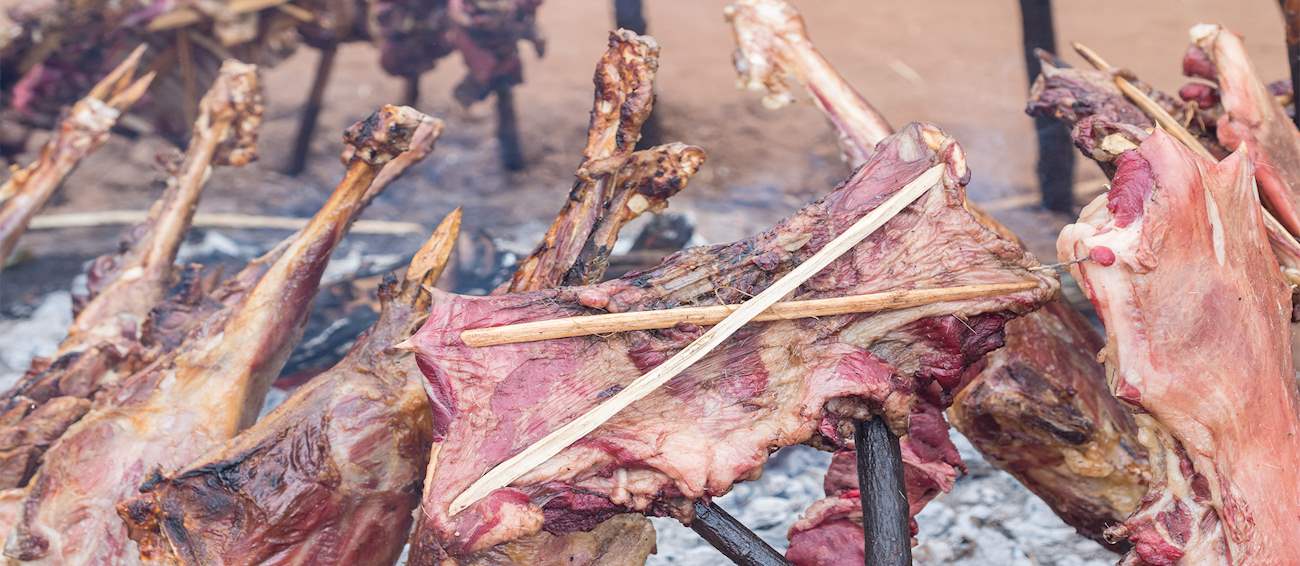This unique, polenta-like side dish is a Tanzanian favorite, traditionally served for breakfast, lunch and dinner. Made by rolling a tiny bit of creamy, thick cornmeal paste (made from cooked white maize) in a hand until it forms into a ball, and making an indentation in it with a thumb, ugali becomes an edible spoon that is often dipped into various stews and sauces.
The sign of a good ugali is that it doesn't stick to your fingers. The whole thing is usually dipped in a savory sauce, then placed in the mouth for consumption. Ugali is more than just a taste, it is a food culture in itself. This dish is usually served with whatever meat is available, mashed vegetables, stews, or sour milk.
Nyama choma is Kenya's unofficial national dish, meaning barbecued meat in the Swahili language. The meat is usually goat or beef, served roasted throughout the country, from roadside shacks to fine restaurants. It is often paired with local beer and side dishes such as ugali.
MOST ICONIC Nyama choma
View moreMAIN INGREDIENTS
Kachumbari is a refreshing East African salad based on finely chopped onions, chili peppers, and tomatoes. It can be served as a salad, a condiment, a relish, or an appetizer. In Uganda, it is accompanied by nyama choma, in Kenya, it is served with ugali and pilau, and in Tanzania, it is usually paired with rice pilau or biryani.
There are numerous variations of the dish, so some cooks will add lemon juice, coriander, avocadoes, or cucumbers.
This flatbread is prepared with wheat flour, warm water, salt, and oil. Although chapati arrived in Kenya quite late, at the end of the 19th century, when Indian people worked on the Kenya-Uganda railway, nowadays it is considered a traditional food in the country.
It is said that Kenyan chapati is not that difficult to prepare, but one needs practice in order to get the right ratio of water and flour. Kenyan chapati is typically served at festive occasions and celebrations in Kenya. It can be prepared in two ways: direct chapati (regular chapati) or layered chapati, where the dough is shaped into a rope, the rope is shaped into a coil, and the dough is then pressed and rolled in order to flatten it out before baking.
OTHER VARIATIONS OF Roti
TasteAtlas food rankings are based on the ratings of the TasteAtlas audience, with a series of mechanisms that recognize real users and that ignore bot, nationalist or local patriotic ratings, and give additional value to the ratings of users that the system recognizes as knowledgeable. TasteAtlas Rankings should not be seen as the final global conclusion about food. Their purpose is to promote excellent local foods, instill pride in traditional dishes, and arouse curiosity about dishes you haven’t tried.





